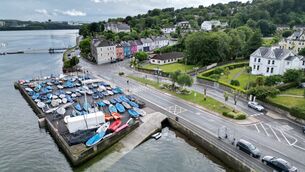Warning over algal scum in biggest Killarney lake

Algal scum caused by the build up of phosphates from farm effluent and sewage was first identified in Lough Leane in the 1980s.
Dogs and other small animals were at “particular risk,” according to the statement issued by Kerry County Council yesterday.
The council said the water had become blue-green, or greenish-brown at a number of locations on the shore and that tests were being arranged.
“While it must be stressed that the risk to public health is extremely low, the presence of algal toxins have been known to cause illness or rashes in certain circumstances,” the council said.
Precautionary warning signs were being erected around the lake and all relevant agencies notified.
A serious algal “bloom” in 1997 led to an in-depth study of the 2,000 hectare lake and its water courses. The study identified agriculture as the main culprit in the phosphate loading into the lake. Animal slurry tanks, and also septic tanks, particularly if they were deficient or over-loaded, were identified.
But the study found that naturally occurring phosphates were also high.
Prolonged dull and humid weather, as experienced this summer, is one of the triggers for algal growth in phosphate-laden waters.













